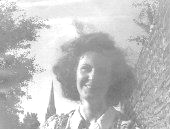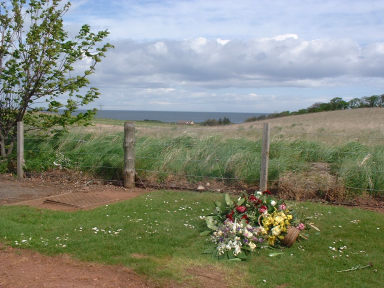Richard Malcolm SILLITTO, FRSE
My father was born on the 3rd of March, 1923, in Lockerbie, Dumfriesshire, the youngest of five brothers. His father, George Sillitto, was an excise officer in Dumfriesshire and was descended from a long line of Derbyshire farmers. His mother, Maud Pratt, came from the south of England, and was the daughter of George’s boss in Carlisle. George and Maud were married in 1910.
Dick and his four brothers all went to university. In those days there were no student grants, but the best students could win competitive scholarships to pay their way through university. Local gossip said that Maud made the boys study hard, and the house lights could be seen burning late in the evening.
His first contact with Dunbar, where he would later spend his retirement, came when his brothers Percy and Geoff became engaged to two sisters. Their father, a doctor, had practised in Wales but retired to Dunbar – perhaps to get far away from his former patients? The boys’ parents were invited to Dunbar "to meet the Grants", and Dick, in his early teens, came with them. He never enjoyed swimming, a dislike he attributed at least in part to over-zealous tuition by his future sister-in-law, in the open air pool that then lay in the bay below today’s indoor pool.
Dick’s early school years were spent at Lockerbie Academy. Though not a great footballer, he won a prize for five-a-side football, having been chosen less for his skill than his bulk which allowed him to batter his way through the opposition! His favourite sport was cricket, and he captained the first eleven at Dumfries Academy, where he was a weekly boarder from 1937 to 1940. He carried on playing cricket with the staff of Edinburgh University until the early 1960s.
Dick went to Edinburgh University to study physics in 1940. After three years he had learned enough to help with the war effort, so in 1943, he was posted to the Admiralty Signals Establishment at Haslemere. He worked on covert infra-red signalling equipment, used for communication in convoys and as navigation beacons by special forces. He also worked on optical techniques for detecting targets in noisy radar displays.
It was not all work at Haslemere. Ladies were called up as well as men. In 1944, Dick met a young Northern Irish engineer at a German class, and exchanged a word or two with her. One lunchtime a few weeks later, he saw her walking across the site. With the simple but effective chat-up line "are you going to lunch, Miss McMillan", he secured her company for the rest of the day – and for the rest of his life! They were married in Belfast on the 12th of September 1947, and have been together ever since.

As a civilian, he was spared the horrors of front line service. The closest he got to occupied Europe was during a sea trial on a Motor Gunboat, going well over the channel towards Occupied France. He and Winifred much enjoyed the film "Enigma", which conveys a very credible and apparently accurate impression of what it was like to be a civilian of military age in a nation at war. That period created another connection with East Lothian, with periods of work at the Tantallon Castle trials site.
At the end of the War, in 1945, he was awarded an unclassified "War regulations Honours degree" by Edinburgh University. He continued to work at Haslemere until the summer of 1946. He was then offered an attractive job by Chance Bros (Birmingham) but the offer was withdrawn when they learned his age. Winifred never saw the original letter, but he told her about it, and they discussed whether she would be content if he pursued a low-paid academic career.
So he went up to Edinburgh to see the new professor of Natural Philosophy (Norman Feather) with a view to returning to complete his physics degree. However, Feather invited him instead to start straight into research, and this Dick decided to do. He left Haslemere in June or July 1946, to live with his mother (and his Aunt Ada) who had just moved from Lockerbie to Edinburgh.
A year later he was appointed to an Assistant Lectureship, and then in 1948 he joined the permanent academic staff as a lecturer. Perhaps the best years of his life were spent on the department’s new Cockcroft Walton high voltage machine, getting it to work and keeping it going with the help of Mike Carter, Harry Napier and various research students. Dick was meticulous about not putting his name on papers to which he did not have a significant input, and about listing authors in alphabetical order.
He was promoted to senior lecturer in 1962 and to reader in 1980. He served on the University senate when Gordon Brown was student rector. In 1983, he became head of the newly formed Applied Optics research group, which did a lot of innovative work on micro-displays. One of his research students of that period, Ian Underwood, went on to co-found Micro-Emissive Displays and win the 2004 award for Scotland’s Top Innovator.
Dick achieved professional recognition from his peers, becoming a Fellow of the Institute of Physics in 1960, of the Royal Society of Edinburgh in 1961, and of the Optical Society of America in 1993.
Of numerous rewarding professional relationships he developed in a long career, two of the strongest and most enduring were with two refugees from Eastern Europe who became eminent physicists with world-wide reputations.
Peter Farago escaped from Hungary in 1957, came to work at Edinburgh University, and shared an office with Dick for three years from 1961 . This chance allocation of office space started a lifelong professional and personal friendship. Sadly, Peter died on the last day of 2004, aged 86.
Emil Wolf and his brother escaped to Britain from Czechoslovakia in 1939 when Emil was 16. He studied at Bristol University, and worked in temporary positions at Edinburgh University in the early 50s. With Max Born, the famous theoretical physicist, he co-authored the first edition of the monumental "Principles of Optics", usually known simply as "Born and Wolf". In one of its less well-advised recruitment decisions, Edinburgh University declined to offer Emil a permanent position, so he moved to Rochester in the USA, where he is still active as the "Wilson Professor of Optical Physics".
He and Dick continued to correspond by letter, telephone and e-mail for the ensuing half-century. Emil and his second wife Marlies visited Dick and Winifred in Dunbar as recently as the end of 2004 -- and shared a memorable meal at the newly opened Rocks restaurant.
Dick himself did not enjoy travelling. His single visit to foreign soil was a trip to Rochester to visit Emil and attend an optics conference in 1961. He loved to visit wild places in Scotland. Many family holidays were spent with friends in the Ross of Mull. Other holidays took the family to Lewis, Shetland, Fair Isle and Orkney, and to learn to sail at the Loch Earn Sailing School. For many years the family had the use of the old Mill at Dunglass, southeast of Dunbar, as a weekend retreat.
His own major work, the textbook "An Introduction to Non-relativistic Quantum Mechanics", was first published in 1960. He also published numerous research papers and articles. He gave lectures and radio broadcasts on popular aspects of science, including Maskelyne’s measurements at Schiehallion in 1774 to determine the mass of the earth.
He supervised many PhD students (though he never completed a PhD himself), and taught thousands of undergraduates. Many of his students stayed in touch after completing their studies and became lifelong friends. At least some of them remember excellent lecture preparation and inspirational teaching, a quiet manner and a dry sense of humour. He retired from academic employment in 1990 at the age of 67, with the rare designation of Reader Emeritus, and physics remained a hobby and interest for the rest of his life.
His other interests included art – he was convenor of the Edinburgh University Pictures Committee for a number of years, and he and Winifred numbered many artists among their wide and varied circle of friends. He also became a keen ornithologist, and was a member of the Scottish Ornithologists’ club, and enjoyed photography. These hobbies converged, and his wonderful photograph of a gannet at the Bass Rock had pride of place in his living room for many years.
His and Winifred’s other unique achievement was to commission the design and build of "the Sillitto house", as it is now known to architecture students, on the north side of Blackford Hill in Edinburgh. It was also known as "the upside down house", because the bedrooms were on the ground floor and the living areas upstairs. This house was built during 1960-61, and they lived in it for 30 years before retiring to Dunbar. Before that, they lived for 11 years in a university flat in George Square, long since demolished. We moved to the new house when I was 7.
Dick’s life was not without its difficulties. He struggled with diabetes for nearly forty years, had heart problems, and was diagnosed with gluten allergy when he was 76. He would comment wryly that he "was only here through the miracles of modern medical science". At his 70th birthday he expressed doubt that he would see his 80th – doubt that was to prove unjustified. In his last years he lived quietly in Dunbar, and we have been very touched by the many people who have said how much they liked and respected him.

"
. . . 'til aa the seas gang dry "
